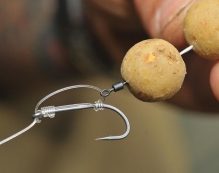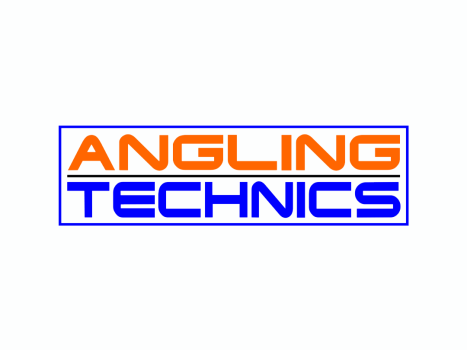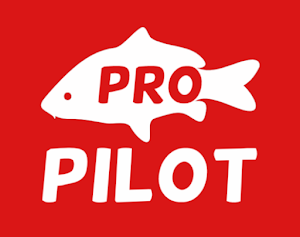How to Tie a D Rig for Carp Fishing
Carp fishing is an art and a science, and the D rig is one of the most effective and versatile rigs you can use. It’s known for its excellent hooking potential and effectiveness with pop-up baits. This comprehensive guide will walk you through the process of tying a D rig, explain when and why to use it, and provide tips on getting the most out of this setup.
Table of Contents
- Introduction to the D Rig
- Materials Needed
- Step-by-Step Guide to Tying a D Rig
- Preparing the Hooklink
- Tying the Knotless Knot
- Forming the "D" Loop
- Attaching the Bait Screw or Rig Ring
- Completing the Rig
- When and Why to Use a D Rig
- Tips for Effective Carp Fishing with a D Rig
- Common Mistakes and How to Avoid Them
- Advanced Techniques and Variations
- Maintenance and Care for Your D Rigs
1. Introduction to the D Rig
The D rig is named for the distinctive "D" shape formed by the loop of the hooklink material behind the hook eye. This loop allows for improved bait presentation and a more effective hooking mechanism. The D rig is particularly effective for pop-up baits, ensuring that the bait is presented off the bottom, making it more attractive and accessible to carp.
2. Materials Needed
To tie a D rig, you will need the following materials:
- Hooklink Material: Fluorocarbon is preferred for its stiffness and low visibility underwater.
- Hooks: Wide gape hooks are ideal. The size of the hook depends on the size of the bait and the target carp.
- Bait Screw or Rig Ring: To attach the bait.
- Bait: Typically pop-up boilies.
- Scissors or Snips: For cutting the hooklink material.
- Knot Puller Tool: Helps in securing knots tightly.
- Lighter or Baiting Needle: For certain knot types and to melt tag ends.
3. Step-by-Step Guide to Tying a D Rig
Preparing the Hooklink
- Cut the Hooklink: Start by cutting a length of hooklink material. Around 12-15 inches is a good starting point.
- Thread the Hook: Thread one end of the hooklink through the back of the hook eye, ensuring it extends past the bend of the hook by a few inches.
Tying the Knotless Knot
- Position the Hooklink: Hold the hook and hooklink so that the hook point is facing upwards and the hooklink is positioned along the shank.
- Wrap the Hooklink: Make 6-8 tight wraps around the shank of the hook, moving towards the bend. Ensure the wraps are neat and even.
- Secure the Knot: After completing the wraps, thread the end of the hooklink back through the hook eye from front to back. Pull tight to secure the knot.
Forming the "D" Loop
- Form the Loop: With the remaining length of the hooklink, form a small loop extending from the hook eye to the bend of the hook. This will create the "D" shape.
- Secure the Loop: Pinch the loop to maintain its shape and position. Then, take the free end of the hooklink and wrap it around the shank once or twice, close to the hook eye.
Attaching the Bait Screw or Rig Ring
- Add the Bait Screw or Rig Ring: Slide the bait screw or rig ring onto the loop, ensuring it moves freely.
- Close the Loop: Bring the free end of the hooklink back through the hook eye once more from front to back. Pull tight to secure the "D" loop and ensure it retains its shape.
Completing the Rig
- Trim the Excess: Trim any excess hooklink material close to the knot. Use a lighter or baiting needle to carefully melt the tag end, preventing it from fraying.
- Attach the Bait: Screw your chosen bait onto the bait screw or attach it to the rig ring.
- Final Adjustments: Check the length and shape of the "D" loop. Ensure the bait is positioned correctly and the rig is secure.
4. When and Why to Use a D Rig
The D rig is especially effective in certain conditions and for specific bait presentations. Here’s when and why you should consider using it:
- Pop-Up Presentations: The D rig excels with pop-up baits, ensuring they are presented just off the bottom.
- Clear Waters: Fluorocarbon hooklinks are less visible, making this rig ideal for clear water conditions.
- Cautious Carp: The D rig's mechanics and presentation can fool wary or pressured carp.
- Weedy or Silty Bottoms: The elevated bait presentation can avoid debris and ensure better visibility to carp.
5. Tips for Effective Carp Fishing with a D Rig
- Bait Choice: Use high-visibility or high-flavor pop-ups to attract carp.
- Rig Maintenance: Regularly check your rig for damage or wear and retie if necessary.
- Bait Presentation: Ensure the bait is buoyant enough to stay elevated but not too buoyant to lift the hook off the bottom.
- Sharp Hooks: Keep your hooks razor-sharp for better hooking efficiency.
6. Common Mistakes and How to Avoid Them
- Improper Knot Tying: Ensure all knots are tight and secure to prevent them from slipping.
- Incorrect Hook Size: Match the hook size to your bait and target fish size.
- Poor Loop Formation: Maintain the "D" shape loop for optimal bait movement and hooking potential.
7. Advanced Techniques and Variations
- Combi Rigs: Combine the D rig with other rig components for varied presentations.
- Adjustable Hair: Use adjustable hair rigs to vary the bait height.
- Hooklink Length: Experiment with different hooklink lengths based on fishing conditions.
8. Maintenance and Care for Your D Rigs
- Inspect Regularly: Check for frayed hooklink material or damaged hooks.
- Store Properly: Keep your rigs in a rig box to prevent tangles and damage.
- Replace When Necessary: Retie or replace rigs that show signs of wear.
By following these detailed steps and tips, you can tie an effective D rig and improve your carp fishing success. Practice makes perfect, so take your time to master each step and adapt the rig to your specific fishing conditions. Happy fishing!








190 Replies to “Tying a D rig and when to use it”
My brother suggested I might like this blog. He was entirely right.
This post truly made my day. You cann’t imagine just how
much time I had spent for this information! Thanks!
Amazing! Its truly awesome paragraph, I have got much clear idea concerning from this paragraph.
Does your site have a contact page? I’m having trouble locating it but, I’d
like to send you an email. I’ve got some
recommendations for your blog you might be interested
in hearing. Either way, great blog and I look forward to seeing it develop
over time.
I used to be recommended this blog by my cousin. I am
no longer positive whether or not this post is written by means of him as nobody else realize such designated approximately my problem.
You are wonderful! Thank you!
Hey there I am so glad I found your blog page, I really found you by mistake, while I
was researching on Digg for something else, Nonetheless I am here now and would just like to say thanks for a incredible post
and a all round exciting blog (I also love the theme/design), I don’t have time to browse it all at the minute but I have saved it and also included
your RSS feeds, so when I have time I will be back to read a great
deal more, Please do keep up the excellent work.
I don’t even know the way I ended up here, however I thought this publish was once good.
I don’t understand who you might be however certainly you are
going to a famous blogger if you are not already. Cheers!
Hi there would you mind stating which blog platform you’re working with?
I’m looking to start my own blog in the near future but I’m having a difficult time making a decision between BlogEngine/Wordpress/B2evolution and Drupal.
The reason I ask is because your layout seems
different then most blogs and I’m looking for something unique.
P.S My apologies for getting off-topic but I had to ask!
Hi everyone, it’s my first pay a visit at this website,
and article is in fact fruitful for me, keep up posting such posts.
https://international-news.ir
This site was… how do you say it? Relevant!!
Finally I have found something that helped me. Thanks a lot!